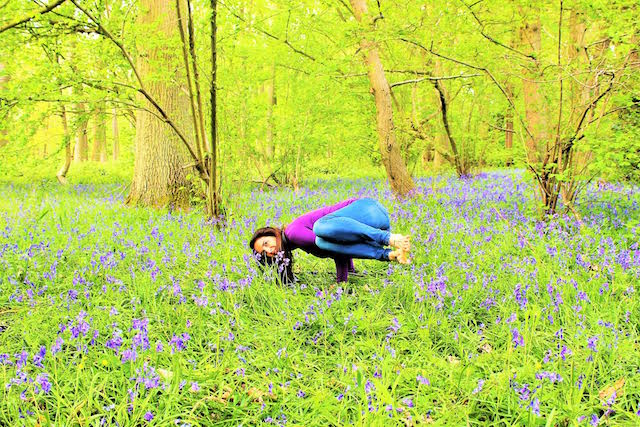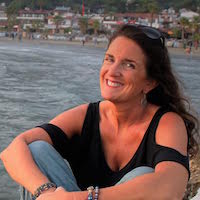
This is personal, but it may just resonate….
I have had my fair share of injuries over 30 years of practising yoga, from hamstring tears, to sacroiliac pain, to knee issues. Injuries can be debilitating, however they can also be a huge learning curve both physically and emotionally if we allow them to be.
As I have taken time to recuperate and heal, I have gained therapeutic knowledge in the process which has matured my own personal practise, as well as evolved my teaching experience.
For about three years, I have had a recurring shoulder injury which I believed was originally caused by practising “108 sun salutations” for a charity yoga event. I now feel that for me, this was a very stupid thing to do.
Firstly I was practicing between two strong and fit male yoga teachers so my ego perhaps got the better of me. Secondly, I feel that a repetitive movement performed over and over again, especially as you start to tire, can make you lose awareness of correct muscular alignment.
Thirdly, and the main contributor for me, was that I was over 45 and at that stage of my life known as Pre-Menopausal. As a woman reaches a certain maturity in age, her oestrogen levels drop and the stress hormone cortisol can dominate. This can weaken, tire and tighten our muscles and joints, in some cases triggering a condition known as menopausal arthritis
Sun salutes, when practised repeatedly can create too much friction to the rotator cuff tendons and muscles (these are responsible for connecting the upper arm to the shoulder blade). While moving through this sequence, you are asking your shoulder joint to negotiate a delicate dance between flexion, extension, internal and external rotation, all whilst bearing weight. Then the tendon of the supraspinatus muscle gets sandwiched between the bones of the shoulder blade and the arm, consequently resulting in de-stabilizing the shoulder joint and causing impingement.
So this is exactly what happened to my shoulder a couple of days after the 108. I was performing an arm balance in my own personal practice, my shoulder already weakened and compromised, so it gave way. I literally felt something go and splat—fell flat on my face.
My injury began to improve after 18 months of honouring where my body was, working therapeutically with it and taking things easy, but then it reoccurred in August of last year. I continued to practise mindfully and carefully, but by November the pain became more intense. It was now was seriously affecting not just my yoga practice, but my sleep and ability to do mundane things in my everyday life, such as filling my kettle full of water, carrying shopping bags, changing gear in my car, even putting my coat on.
Yoga is my everything, it is the one thing that always puts me back together again and helps me find my way in this world. And I had always taken this for granted. Due to my shoulder discomfort, yoga was fast becoming just my job.
Coming to my mat felt like a chore—I practised enough to be able to teach well, but I seemed to have lost my yoga soul.
This latest injury was unforgiving and perhaps a wake-up call about accepting that my body is changing and that I can no longer practice in the way that I always had: without fear, playfully, painlessly and with true passion. When our bodies are physically compromised, how can we continue to move, stay limber, strong, and maintain a connection to our asana practice so that we continue to stay open-minded and grow as yogis and students?
The word Yoga means to yoke—the mind, body and spirit—I have always taught this and therefore was determined not to feel defeated or discouraged, so I sat with my shit and allowed my injury to unveil yet another layer of myself.
After all, I knew full well that yoga is not just about finding bliss and serenity after 90-minutes of vigorous vinyasa practice. It is not an escape from reality, but it actually it helps us deal with and work with the reality of right here, right now so that we open our eyes, continue to move forward and see things differently.
This is my yoga now. I’m motivated to make the effort to learn what I can, do what I can and let go of what does not serve me. Like all things, this will take work, dedication, time and an honest desire to let go. I know that I have to honour where I am right now in my life, stop pushing myself, reduce my busy teaching schedule, rest more, respect my body more and give myself time to heal.
For three months now, I have been teaching and practising modified vinyasa flow sequences, sometimes without any sun salutations, which so often are used to hold together the sequence. I see this as a new process of self discovery and it has actually made me more creative and inventive when devising my routines. My focus for my home practice includes more meditation, pranayama, somatic and restorative yoga, all of which are so very nourishing to my mind, body and soul at this period in my life.
This challenge and experience has inevitably changed me and added an extra bow to my teaching and to the ongoing shifts that need to occur in order for me to grow as a person and a teacher. The most wonderful thing is that I’m falling back in love with yoga again.
This is the absolute beauty of yoga in action—it wakes up residues that have been lying dormant within us, so that we can reflect on where we want to place our energy in the future. Because in the words of the wise sage Patanjali, “Unnecessary suffering must be avoided.”
From now on this will be my daily mantra:
“I Love You. I’m Sorry. Forgive Me. Thank You.” ~ Dr. Joe Vitale (Ho’oponopono)
Author: Brigitte Riley
Editor: Nicole Cameron
Image: Author’s own










Read 0 comments and reply